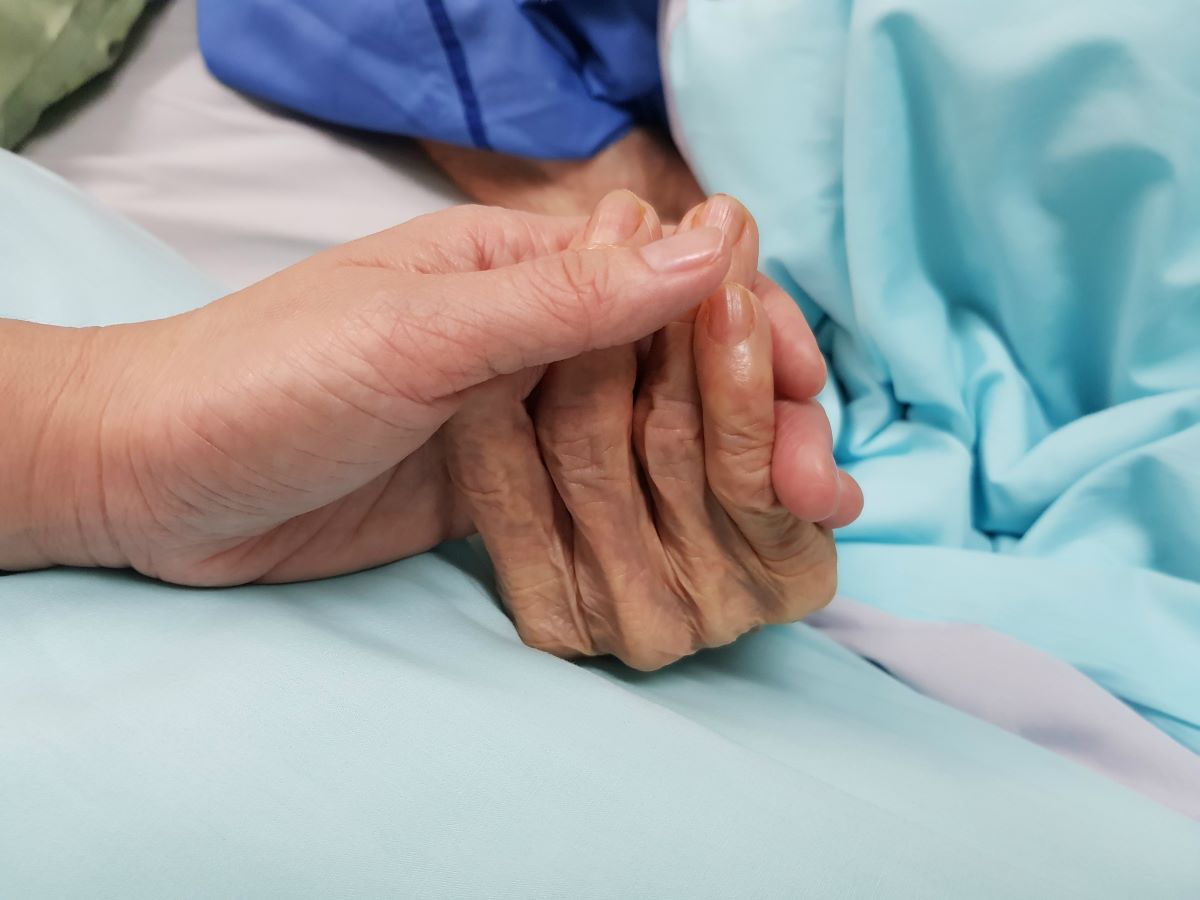Providing Comfort Care: 5 Best Practices for Your Facility

In spite of the growing demand for in-home hospice services, nearly 60% of all deaths still occur in hospitals. Comfort care measures are used in in-patient settings to direct care for patients in the time immediately surrounding death. These guidelines ensure that each patient experiences the most dignified end-of-life journey possible.
We’ll discuss what this type of care is and how it relates to palliative and hospice care services. Then, we’ll cover five best practices your facility can use to guide and support staff in providing the highest quality care possible during this challenging time.
Comfort Care vs. Hospice vs. Palliative Care
In hospital-based settings, comfort, or end-of-life (EOL) care describes the interventions that reduce suffering, alleviate pain, and provide relief for the patient who is actively dying. It does not have to be provided by a hospice provider and often is not. For example, in the hospital setting the primary team might order EOL care measures for a dying patient, with or without additional hospice or palliative care consultation.
Although palliative and hospice care models share overlapping goals with EOL care, they are distinct from one another in key ways. Palliative care also addresses a patient’s need for symptom management but can be used at any point during the course of a serious illness, including during active, curative treatment. To be eligible for hospice services, however, a patient must have a prognosis of six months or less to live and must no longer be seeking treatments to cure or slow the disease process.
Best Practices for Providing Comfort Care
The goal of EOL care is to meet the patient’s physical, mental, emotional, and spiritual needs. The processes and procedures at your facility should support staff in meeting these objectives. Here are five best practices that give your team the tools they need to provide exceptional comfort care.
1. Create an Order Set for Symptom-Based Care
Order sets help standardize care between providers and are effective for ensuring every aspect of care and physical comfort has been specifically addressed. Many facilities base their order sets on symptom management categories, including:
- Pain
- Dyspnea
- Anxiety
- Delirium and agitation
- Nausea and vomiting
- Secretions
- Constipation
- Fever
Adequate pain control is one of the most important symptoms to manage. About 40% of patients experience moderate-to-severe pain during the last three days of life.
Other important categories of information outside of symptom management include code status (confirmed DNR/DNI), withdrawal from mechanical ventilation, and removal of invasive monitoring devices. Hydration, artificial nutrition, and oxygen administration can be controversial, and opinions on their use can vary widely.
2. Develop a Nursing Order Set for Comfort Care
A nursing order set is an essential companion to the symptom management order set. These orders must also be detailed and address all aspects of nursing-related patient care, including:
- Frequency for assessing and reassessing symptom management categories
- Vital signs frequency (or discontinuation)
- Oral care
- Turning/repositioning
- Room identification (signage)
- Silencing of alarms
- Removal of monitoring devices (e.g., monitors, blood pressure cuff, sequential compression devices, etc.).
- Visitation and preparation of the room for loved ones
- Assessment of family psychosocial needs like bereavement and funeral arrangements, social work, and spiritual support
Many facilities support nursing orders by including them in a comprehensive EOL policy and protocol. It’s important to make sure that both order sets and related policies are all in alignment and that updates are made as needed.
3. Develop an Education Plan
Your team must have a solid understanding of EOL care practices, including training on any order sets, policies, or procedures that specifically guide care. Education efforts should be ongoing and are often incorporated into annual competencies.
For general EOL education, the End-of-Life Nursing Education Consortium (ELNEC) offers courses and resources for nurses who practice in critical care, geriatric, and pediatric care settings. Other programs offer training courses to improve communication between clinicians and patients during EOL care. A host of other educational materials are available through the Hospice and Palliative Care Nurses Association.
Finally, remember to engage the patient and their support systems in your education plan. Be sure to assess their educational needs around EOL care to help set expectations and initiate those difficult — but essential — conversations about how the patient defines a “good death.”
4. Enlist a Multi-Disciplinary Team
The entire interdisciplinary team should be involved in the decision to transition care. Many of these patients are already receiving care from palliative and hospice care teams. Respiratory therapists, speech therapists, physical therapists, nurses, social workers, and other consulting specialists will likely be involved in the decision-making process. The patient and their loved ones are the focus of all discussions and should be involved (as much as possible and appropriate) every step of the way.
In addition, once EOL care is initiated, it’s important to clearly communicate this to everyone working in the facility, including dietary services, environmental services, and phlebotomy. The patient and their family should be given as much privacy and respect as possible. In addition to placing an order in the electronic health record (EHR), many facilities use signage on the door of the room to alert staff and prevent unwanted visitors. Disruptions should be avoided to maintain a peaceful, quiet environment for the dying patient.
5. Support and Care for Your Team
Caring for the dying is emotionally difficult for healthcare providers. Moral distress and compassion fatigue set in when a nurse’s core values are strained. It’s common for staff to struggle with being patient advocates during this stressful time. Consider rotating staff assignments for patients who are receiving comfort care nursing so your team has time to recharge and focus on their own well-being.
Establish support systems to help staff process the intensity of working with dying patients and grieving loved ones. Conduct structured debriefs after a patient’s death to encourage staff to share their experiences and evaluate what worked well and what didn’t.
Many facilities make social workers and chaplaincy services available to staff to help with emotional and spiritual needs. Mindfulness and wellness programs have become increasingly popular, and many employee assistance programs (EAPs) offer free counseling sessions for staff during times of crisis. Caring for your team shows you value them as individuals and acknowledge that they’re affected, spiritually and mentally, by witnessing death and grief.
Looking for More Information About End-Of-Life Care?
We’ve discussed five best practices for delivering comfort care to patients in your facility. If you’re looking for extra resources to help your team deliver compassionate, patient-centered care, IntelyCare is your trusted source for information. Our newsletter delivers free nursing management insights to support healthcare managers.
